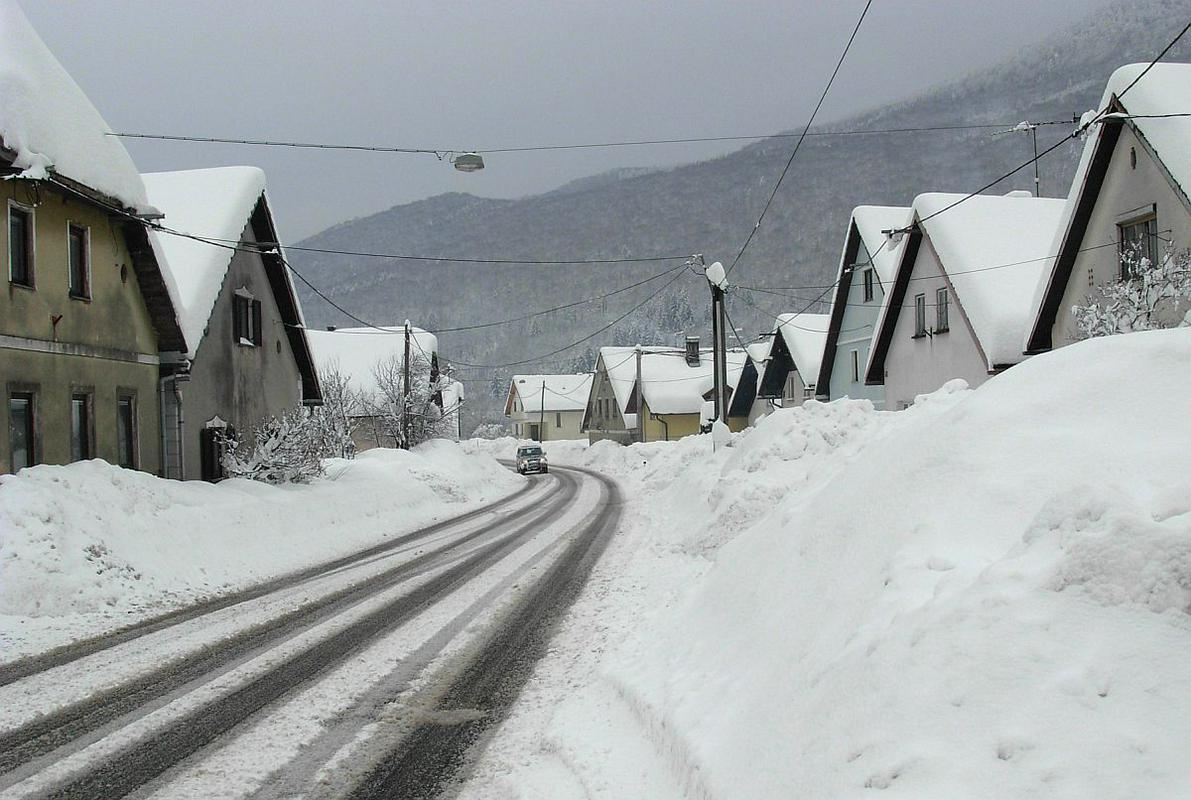At first glance, it could have passed for Schwarzwald: A region of endless forests dotted with small, well-tended German-speaking villages, most with orchards and a village church. But this idyllic landscape wasn’t in Germany; it was in Slovenia – and the villages are now merely a distant memory.
Slovenia’s Kočevska region was once the home to a large German community. The region’s Germans – known as Kočevarji in Slovenian and Gottscheer in German – were settled there in the 14th century. They were brought in from Tyrol and Carinthia by the Counts of Ortenburg, and eventually became a German island in the middle of Slovenian-populated territory.
Their existence wasn’t an easy one. The Kočevska region, which had previously been almost unpopulated, was a wild place, inhabited by bears and wolves. Its residents had to endure long, snowy winters and -- for many years -- the threat of Turkish incursions from the south.
Yet, the Gottscheers managed to survive and even thrive in the less than welcoming environment. While some earned a living as hawkers, most were farmers and fruit orchards were a common sight in their villages. They had their own schools and cultural institutions, and developed their own Germanic dialect. By the late 19th century, the Gottscheer community numbered almost 30,000.
After World War I, the Gottscheers, once privileged in German-dominated Austria, suddenly found themselves a minority in the new South Slav state. Because of the often hostile attitude of the authorities and a declining standard of living, many emigrated to the U.S. and elsewhere. Most remained, however, and managed to preserve their unique identity despite the increasing rate of intermarriage with ethnic Slovenians, and the abolition of German-only schools.
But World War II changed everything. As the Axis powers occupied Yugoslavia and divided it up among themselves, the Gottscheers found themselves in the zone annexed by Mussolini’s Italy. Because Hitler wanted to move the region’s German population to the German Reich, the Gottscheers were ordered to leave their homes and resettled, many in the Lower Styria region. As part of a mass population exchange, some were given homes previously inhabited by ethnic Slovenians, who were in turn resettled in Germany and German-occupied Serbia, or sent to concentration camps.
Worse was to come to the already resettled Gottscheers after the war. To the victorious Communist authorities, any remaining ethnic German was a potential enemy. Many were deported, eventually settling in Germany or the U.S.; some were imprisoned and even killed. Those who remained in Yugoslavia were taught to be ashamed of their German heritage.
The areas inhabited by the Gotscheers were left devastated. Most of the empty villages, including their churches, were intentionally neglected or demolished. A large swathe of territory became a military area, off-limits to civilians. Entire tunnels were built under the mountains, for the Communist leadership to retreat to in case of war.
Today, travelers can barely see the remains of what were once thriving Gottscheer communities. In some places, only untended orchards in the middle of dark forests hint that prosperous villages once stood there. Ninety percent of the region is now covered in forests, compared to less than half a century ago. A new cultural organization is now trying to keep the dialect and the culture of the Gottscheers alive, but few descendants of the exiled Germans have returned to their ancestral home. A unique community in the heart of Slovenia is, for the most part, now just a memory.
Jaka Bartolj


































































